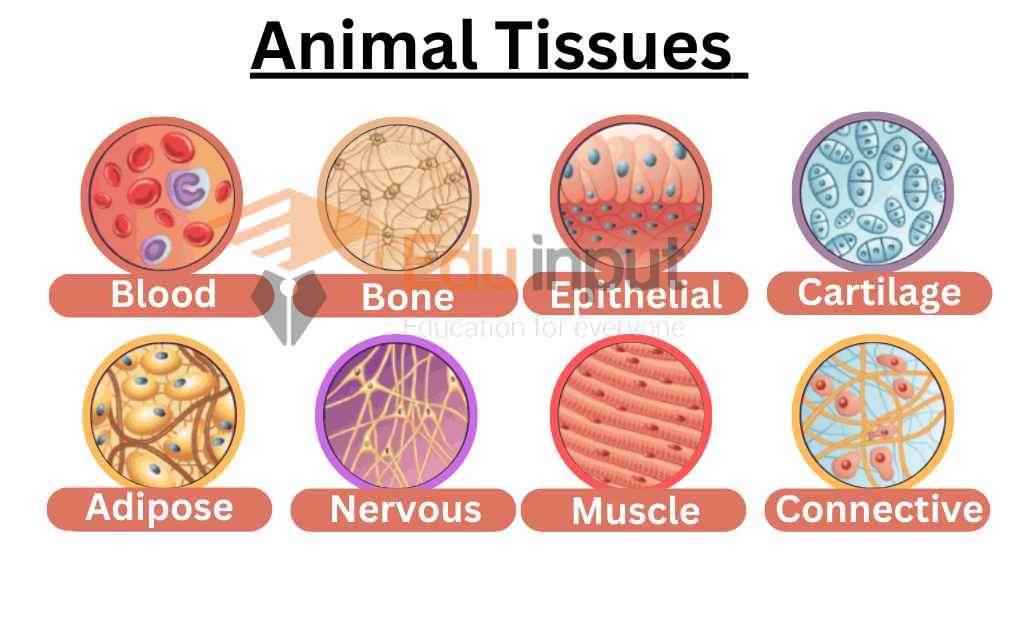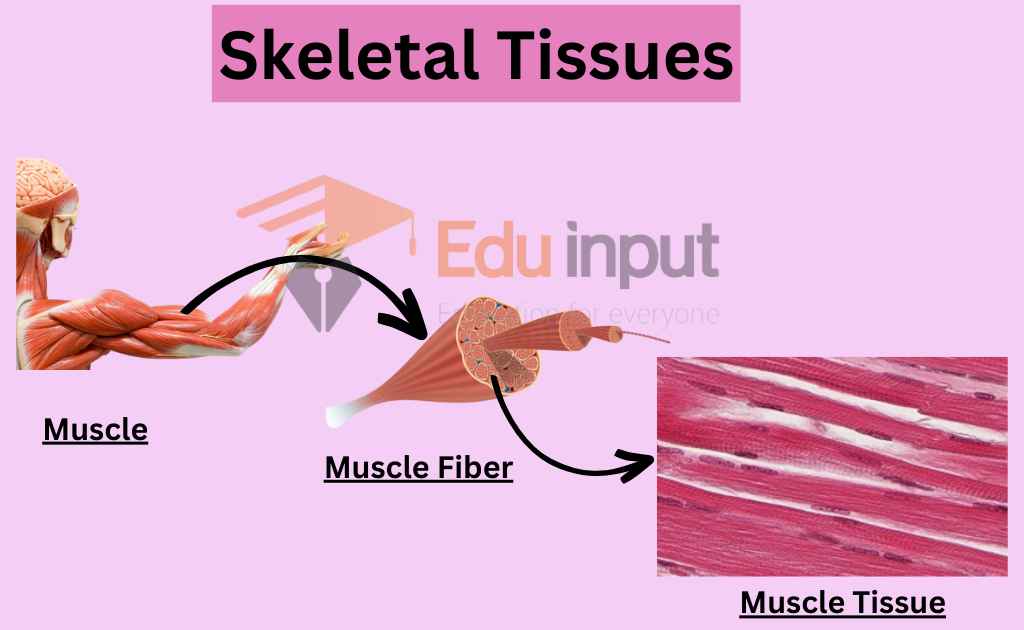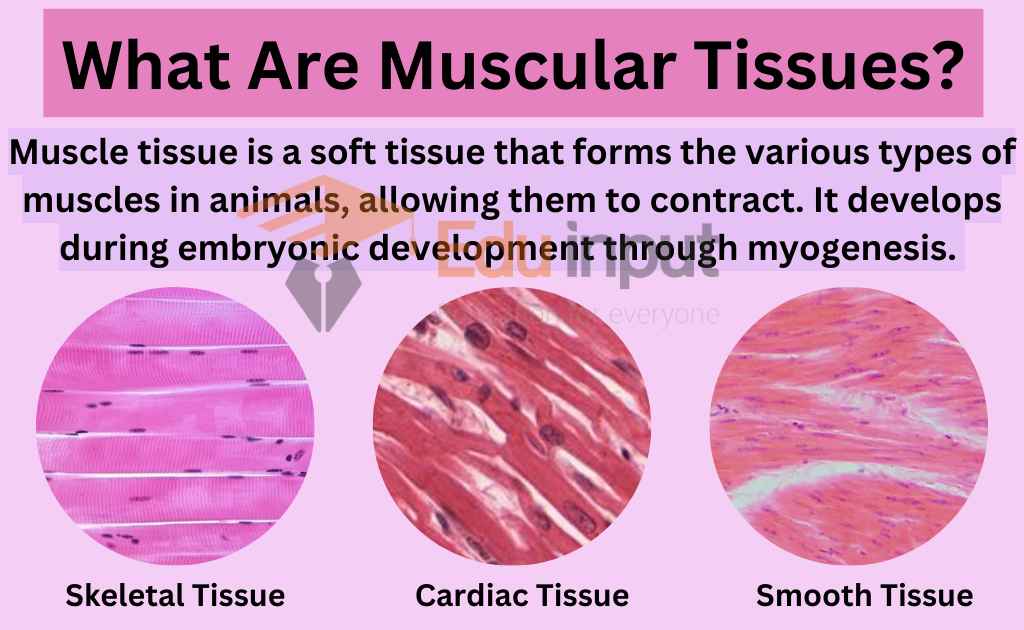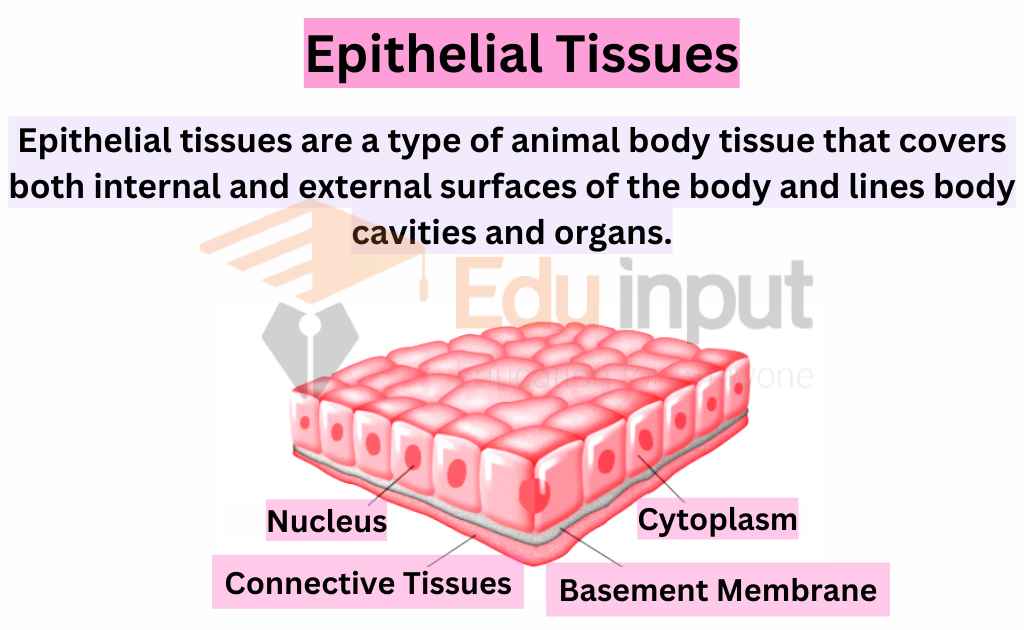What Are Animal Tissues?-Types And Functions
A tissue is a group of cells that work together to perform the same function in an animal’s body. Organs and all the body parts in an animal’s body are made up of tissues. There are four main types of animals tissues that perform different functions.
There are four types of tissues in the animal body; epithelial tissue, connective tissue, muscle tissue, and nervous tissue.

Key Points
- Animal tissues are specialized groups of cells that work together to perform a particular function in an animal’s body.
- There are four main types of animal tissues: epithelial, connective, muscle, and nervous tissues.
- Epithelial tissue lines the surfaces of the body and can be composed of a single or multiple layers of cells.
- Connective tissue provides support and protection to soft parts of the body and includes dense, loose, cartilage, and bone connective tissue.
- Nervous tissue initiates and transmits nerve impulses, and its main components include neurons, neuroglia, and neurosecretory cells.
- Muscle tissue initiates the movement of an organism and has three types: skeletal, smooth, and cardiac muscle tissue.
What Are Animal Tissues?
Animal tissues are specialized groups of cells that work together to perform a particular function or a set of related functions in an animal’s body. These tissues are classified into four main types – epithelial, connective, muscle, and nervous tissues.
Types Of Animal Tissues
There are 4 types of animal tissues:
- Epithelial Tissue
- Connective Tissue
- Muscle Tissue
- Nervous Tissue
Epithelial Tissue
Epithelial tissue is a type of tissue that is made up of tightly packed cells that line the surfaces of the body. These tissue are found in different parts of the body, such as the skin, the lining of the mouth and nose, and the lining of the digestive system.
Epithelial tissues cover the outside of organs and structures in the body, as well as line the inner open spaces of organs. Depending on the location and function, epithelial tissues can be composed of a single layer of cells (Simple epithelial), or they can be composed of multiple layers of cells (stratified epithelia). The different types of epithelia are classified based on the shapes and arrangements of cells present.
On the other hand, the inner lining of the gastrointestinal tract, lungs, urinary bladder, exocrine glands, vagina, and other organs are made up of epithelial tissues that are derived from the endoderm. These tissues play important roles in absorption, secretion, and excretion within the body.
Epithelial cells come in various shapes and sizes, each with its unique characteristics and functions. Squamous epithelial cells are flat and round with a small, centrally located nucleus. They form a covering or lining and facilitate diffusion in tissues when arranged in a single layer.
Cuboidal epithelial cells are cube-shaped and have a single, central nucleus. They are found in glandular tissues throughout the body, where they prepare and secrete glandular material.
Columnar epithelial cells are taller than they are wide and resemble a stack of columns in an epithelial layer. They absorb material from the lumen of the digestive tract and prepare it for entry into the body.
Transitional or uroepithelial cells are found only in the urinary system and appear in a stratified layer in the bladder and ureter. These cells can appear to pile up on top of each other in a relaxed, empty bladder, but as the bladder fills with urine, the lining expands and thins out, transitioning from thick to thin.
Connective Tissues
Connective tissue is a type of tissue that provides support and protection to soft parts of the body. It consists of cells embedded in an extracellular matrix that is secreted by these cells. The matrix is made up of protein fibers and protein-polysaccharide molecules. Supporting connective tissue includes cartilage and bone, which contain collagen fibers and mineral deposits like calcium phosphate.
Dense connective tissue is also called fibrous connective tissue and comprises tendons and ligaments. Tendons attach muscles to bones and have a matrix mainly composed of Type I collagen fibers oriented parallel to each other, making them strong but not elastic. Ligaments attach one bone to another and contain both collagen and elastin proteins, which allow them to stretch.
Loose connective tissue is found throughout the body and serves as packing and binding material for most organs. Fascia, which are sheets of loose connective tissue, bind muscles and other structures together and contain collagen, elastin, and other proteins in their matrix. Dense and loose connective tissue originate from fibroblasts, which secrete the extracellular matrix.

Nervous Tissues
Nervous tissue is a type of tissue that forms the peripheral and central nervous systems and develops from the ectoderm of the embryo. It can initiate and transmit nerve impulses, and its main components include neurons, neuroglia, and neurosecretory cells.
Neurons are the structural and functional unit of the nervous system, consisting of an axon, cell body, and dendrites. They play a vital role in receiving and transmitting information throughout the body.
Neuroglia are special cells found in the brain and spinal cord that provide support to the neurons and their fibers. They help in maintaining the environment around the neurons.
Neurosecretory cells function as endocrine organs and release chemical signals from their axons directly into the bloodstream. These cells are involved in regulating various physiological processes such as growth, metabolism, and reproduction.
Muscular Tissues
Muscle tissues are responsible for initiating the movement of an organism and have a range of other functions based on their types.
Muscle tissue is made up of thin and elongated cells called muscle fibers. The structure of muscle tissue includes the sarcoplasm, the sarcoplasmic reticulum, and the sarcolemma. Muscle tissue has four important properties: extensibility, contractibility, excitability, and elasticity.

There are three types of muscle tissue, each with its unique function:
- Skeletal Muscle Tissue: This type of muscle tissue is voluntary and striated, with neatly arranged bundles anchored by tendons. It plays a role in skeletal movements that include posture and locomotion.
- Smooth Muscle Tissue: This type of muscle tissue is involuntary and non-striated, with tapered ends. It is located in the walls of blood vessels, the urinary tract, the trachea, and the digestive system. Smooth muscle tissue helps in peristalsis to move food up and down the alimentary canal.
- Cardiac Muscle Tissue: This type of muscle tissue makes up the majority of the heart. It is involuntary and striated, with branches at irregular angles that help with coordinated contractions occurring inside the heart.
Latest Research About Animal Tissues
- Scientists have studied the relationship between tissue mechanics and growth, which are crucial to understanding morphogenetic processes. Tissue mechanics can affect growth by influencing cell division orientation and signaling pathways, while growth patterns can also affect tissue mechanics. Integrative studies of their interactions are needed to fully understand tissue growth and shape, including feedback mechanisms that use mechanical forces to achieve growth homeostasis. [1]
- Scientists discuss common issues in preparing animal tissues for scanning electron microscope (SEM) imaging. Challenges include removing extraneous substances, revealing internal organization, and reducing water content without damaging the structure. The paper suggests methods such as aldehyde fixation, enzymatic digestion, and carbon-gold coating to render specimens conductive. To limit beam-penetration artifacts, low beam voltages are recommended, and stereo-pair micrographs can aid in interpreting images. [2]

 written by
written by 




Leave a Reply